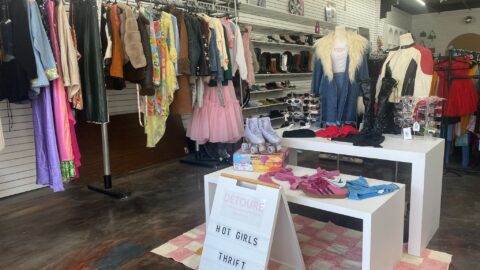There’s a modern-day gold rush on, except instead of the hills and creek beds of the American West, the landscape of this one is the vast, rich expanse of Amazon.com.
With not a pan or pick in sight, fortunes are yet being made as an ever-increasing number of private equity investors flock to the ecommerce behemoth in search of what has become one of today’s richest commodities — successful Amazon third-party sellers.
The bonanza is an outgrowth of Amazon’s unique place in ecommerce and the marketplace sector. With more than half of all U.S. consumers starting their online searches on Amazon, it essentially functions as a product search engine — and a very popular one at that. Additionally, making it big as a third-party seller on the Amazon marketplace has become a powerful sign of success, one that has currency well beyond the Amazon ecosystem.
All these factors have combined to make these Amazon rollup companies — a term that refers to the fact that they “roll up,” or consolidate, similar businesses into one entity — proliferate over the last few years. There’s another big reason why — it’s incredibly lucrative.
Advertisement
“The math is pretty shocking,” said James Thomson, a former Amazon executive and now Chief Strategy Officer of Buy Box Experts, an agency that advises Amazon sellers, in an interview with Retail TouchPoints.
Rollup firms are typically able to buy these Amazon businesses at anywhere from 4X to 6X EBITDA, sometimes less, according to Thomson: “As long as you manage to keep the same efficiency that any one of those accounts had when they were a standalone, you can get a 15X to 25X valuation on your company. And all you’ve done is roll these companies together and hold on for dear life. There is massive financial arbitrage here. It totally makes sense that investors are running toward this.”
The rollup firms have attracted major players from traditional retail and ecommerce, including Wayfair, Zillow, Charming Charlie and Zalando.
For their part, the sellers are eager to cash in as well. “I talked to a company that sold its business last year,” said Thomson. “In July, they had no idea they were going to sell. By November, they were multi-millionaires.”
The Amazon Industry
Rollup businesses as a concept are nothing new; consolidations like this happen in every major industry. What is unusual is that the companies being bought by this particular cohort of rollup firms don’t actually come from the same industry — unless it’s the industry of Amazon. The driving force of this aggregation is the dominance of Amazon itself, not any one product category.
“There was a realization with COVID — Amazon is the marketplace,” said Thomson. “It’s not just another channel, [Amazon] is where people are buying. Even if you’re buying brands that no one’s ever heard of except on Amazon, the ‘on Amazon’ part is enough to look at the brand as a serious business opportunity.”
Want proof? More than half (53%) of all U.S. consumers begin their product searches on Amazon, according to research by ChannelAdvisor and Dynata. That’s more than 2X the 23% who start their inquiry on search engines.
The Amazon factor is what makes these brands so appealing to investors. It’s also what makes them so easy to buy, because the platform itself is a kind of proving ground.
“When you rank high on Amazon in any given category, which you have to earn, you essentially have the best real estate in the biggest mall in the world,” said Keith Richman, Co-founder and CEO of the Amazon rollup firm Boosted Commerce in an interview with Retail TouchPoints. “If you can establish yourself in the top five or top eight listings, it’s a strong signal of strength.”
Retail Veterans Stake Their Claims Amid Growing Number of Rollup Firms
Richman founded Boosted Commerce in 2019 alongside Charlie Chanaratsopon, who’s no stranger to the world of retail; he’s the founder of the women’s fashion and accessories chain Charming Charlie. Boosted currently owns approximately 25 brands (it’s hard to nail down a specific number because of the rapid pace of acquisition in this space), and plans to have 100 or more by year-end, according to Richman. Those brands run the gamut from a company that makes stair treads to a haircare brand and niche wellness products.
By all accounts there are about 40 or so other companies like Boosted out there right now, snapping up Amazon sellers at a breakneck pace. Perhaps the best-known is Thrasio, which hit a $1 billion valuation last year and currently has approximately 100 brands under its belt.
Chanaratsopon isn’t the only retail veteran in the mix: Zillow co-founder Spencer Rascoff is an investor in Boosted; Zalando co-founder David Schneider just invested in SellerX; and Chris Bell, formerly of Wayfair, has launched his own Amazon rollup, Perch, to name just a few. Crunchbase estimates that these and other aggregator firms have raised a total of $2.3 billion in venture capital funding to-date.
There’s a lot of money at play on all sides of the equation. In 2020, total gross merchandise volume (GMV) on Amazon was approximately $490 billion, according to estimates from Marketplace Pulse, and $300 billion of that came from Amazon’s third-party marketplace. So Amazon’s nearly two million third-party sellers worldwide account for well over half of the platform’s total sales — 62% in 2020.
Striking it Rich: From Mom-and-Pop to Multi-Millionaire
The vast majority of these third-party sellers are small operations, oftentimes just one or two people, and for many of them selling on Amazon is just a side business.
Ryan Gnesin first became interested in the Amazon marketplace model in 2016, when he tired of the constant travel that his job as a commodities trader demanded. He was looking to make a change, so he attended an Amazon sellers conference.
“What I found really interesting was there were all these sellers who were running what was essentially a side hustle, but the side hustles were real businesses,” he said in an interview with Retail TouchPoints. “I mean some of them were doing millions of dollars a year, but what I found noticeable was the lack of sophisticated capital in the space. Although it’s very simple to start an Amazon business, it’s actually quite complicated to do it at scale.”
“Often these [third-party seller] businesses, even when they’re successful, are missing basic elements that can make a business work effectively, and rollups give these businesses that expertise,” explained Richard Kestenbaum, Partner at Triangle Capital and an expert in mergers and acquisitions, in an interview with Retail TouchPoints. “These rollups have systematized the running of Amazon Marketplace businesses, [which] enables those businesses to be more successful. They also have the capital to do marketing, which is increasingly important on Amazon Marketplace for growth.”
It’s also a big reason why they’re able to generate those staggering multiples. Gnesin launched his rollup, Elevate Brands, in 2017, but didn’t acquire his first brand until two years later. First, he got his “black belt” in Amazon by launching his own business on the platform, which he eventually scaled to 8,000 SKUs.
“We are agnostic to the category [of the sellers we buy],” said Gnesin. “We believe that mastery over the Amazon platform and mastery over broader branding techniques is what will enable us to be successful.”
FBA: The Gold Standard of Third-Party Seller Acquisition
While product category might not be the key consideration, there are certain common variables in the businesses these rollups look to acquire: strong reviews and a good number of them; quality product (patents preferred); a track record of growth; and room for more.
Whether or not the seller uses Fulfillment by Amazon (FBA) is also a huge factor, and in fact many rollups look to buy FBA businesses exclusively. The reason is one of simple logistics: if you buy multiple businesses and they all have their own 3PL providers, then you have to do the work of coordinating and consolidating that network.
“The beauty of Fulfillment by Amazon is they do all the heavy lifting as it relates to the logistics,” explained Gnesin. “I can scale my business to the moon with FBA; I can’t possibly throw enough inventory at them that they have a problem managing it. It’s just a question of efficiency and being able to scale quickly.”
How Long Can the Gold Rush Last?
But all of this raises a vital question. The nature of gold rushes is that they are short-lived, so will the current bounty of third-party sellers eventually run out?
Not any time soon, if you ask Gnesin: “What people don’t appreciate is how strong the Amazon flywheel is. Although the number of buyers is increasing, the number of sellers is also increasing.”
In fact, nearly 300,000 new sellers have joined Amazon’s marketplace this year alone, according to Finbold. That’s a rate of 3,700 new businesses launching on the platform every day.
Kestenbaum, however, is a bit less optimistic about the long-term prospects for the rollups, at least when it comes to the lucrative returns they’re currently experiencing. He believes that when marketplace growth begins to slow, which it eventually will (even Amazon will at some point hit a ceiling), Amazon will have no choice but to look for other ways to make money, likely through higher fees or lower seller margins.
“Unless the brand becomes known, which is not what third-party seller marketplaces are generally about, Amazon controls it,” said Kestenbaum. “And when Amazon controls the relationship with the consumer, then eventually Amazon’s going to get the margin.”
One way around that is to diversify beyond Amazon. Both Richman and Gnesin, as well as many of their counterparts, talk about eventually taking at least some of the brands in their portfolio into other channels, whether direct-to-consumer, other marketplaces or wholesale. However, Kestenbaum points out that none of the rollups has successfully done this yet, and it’s clearly not the focus at the moment.
“The No. 1 goal in the business plan is to focus on expanding [the brand’s] success on Amazon,” said Richman. “If we buy a business we think will lend itself to a more direct customer relationship, we might invest in an ecommerce platform. And with a lot of these products, it won’t be a hard sell to go to a traditional retailer and say, ‘We’ve got the No. 1 product on Amazon, would you like to give it a shot in your stores?’ But winning on Amazon is business plan 101; everything else is product-dependent.”
As Gnesin pointed out, a belief in the continued dominance of Amazon is pretty fundamental to anyone building these kinds of businesses right now.
“To do this business model, you have to believe that Amazon’s third-party marketplace is going to be around for a long time,” he said. “Jeff Bezos from his very first shareholder letter in 1997 has spoken about the ‘Everything Store.’ Well, the only way you can have an Everything Store is by having the help of millions of sellers constantly innovating on your behalf.”









